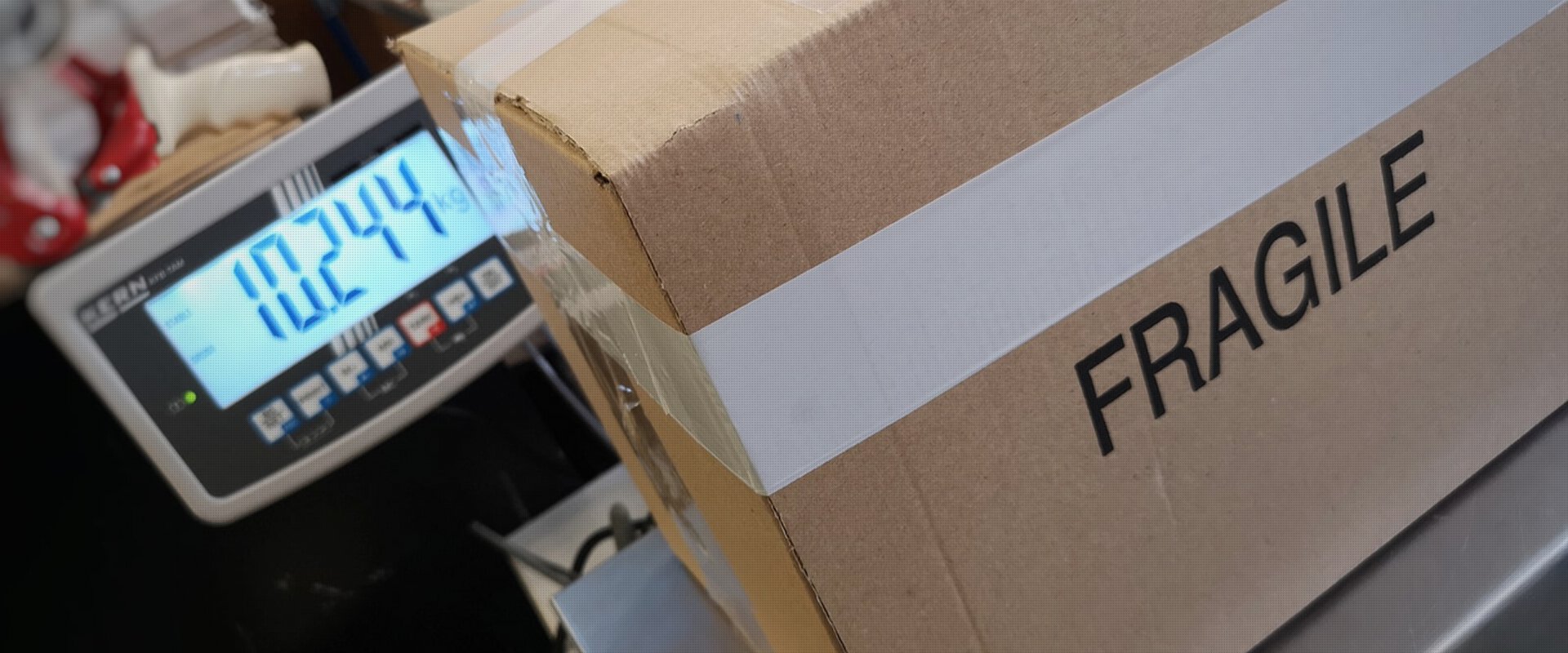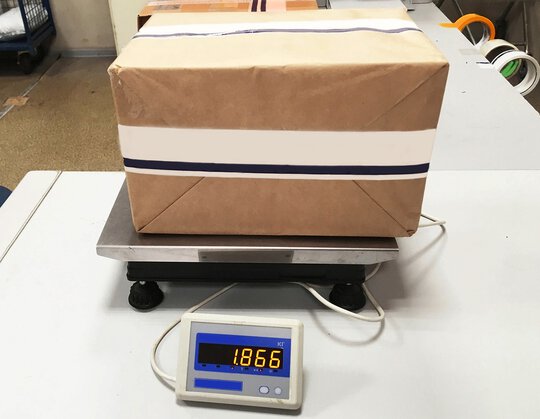
It couldn't be easier: This is how you determine your packaging weight
In just three steps to the total weight of your packaging that is subject to system participation
If you are obliged to participate in the system as a distributor, you must register with the Central Agency Packaging Register (ZSVR) and then license your packaging from the first gram placed on the market. The challenge for many companies: For licensing, you have to determine the packaging weight and assign your packaging to the correct material group according to the Packaging Act. As a dual system, we are happy to advise you on this:
With our guide to packaging weighing, packaging licensing is a breeze!

Step 1: Determine type of packaging
The VerpackG distinguishes between the following types of packaging subject to system participation:
▶ Sales packaging: forms a sales unit and protects the goods when they are handed over to the end consumer (e.g. shampoo bottle).
▶ Service packaging: only serves to hand over goods to consumers (e.g. carrier bag).
▶ Shipping packaging: enables the goods to be shipped (e.g. bubble wrap).
▶ Secondary Packaging: contain certain numbers of sales units or are used to stock sales shelves (e.g. shrink film for 6-carrier water bottles).
Determine material fraction
If you have assigned your packaging to one of the above-mentioned packaging types, you then determine the corresponding material groups:
▶ Glass (colourless or coloured, without lid)
▶ Paper, Board, Cardboard (PPK)
▶ Ferrous metals (magnetic, e.g. lids of glass bottles or food cans)
▶ Aluminium (non-magnetic, e.g. cream tubes)
▶ Plastics (PET, PP, PE, etc.; plastic combinations)
▶ Beverage carton packaging: Combination of materials that (1) cannot be separated by hand, (2) none of the materials accounts for > 95% by weight and (3) the contents are intended for consumption as a beverage.
▶ Other composite packaging: (1) a combination of materials that cannot be separated by hand, (2) in which no type of material accounts for > 95 % of the weight and (3) the contents of which are not intended for consumption as a beverage.
▶ Other materials (e.g. cotton, wood, natural cork, rubber, raffia, ceramics)
Examples needed? No problem! In our leaflet on the correct classification of packaging you will find many examples for all material groups: Download leaflet
Step 3: Determine packaging mass
There are no binding specifications from the Central Agency for determining the packaging mass. Therefore, the following principles are assumed for self-weighing:
▶ Time/Rhythm: The packaging weight is determined once a year or after changes relevant to the weight or material.
▶ Scale & measuring conditions: Weighing with a calibrated scale that measures up to 2 kg and displays two decimal places; environmental influences such as a draft must be excluded.
▶ Material type: Packaging components must be weighed individually if they belong to different material categories.
▶ Packaging components must be weighed individually, if they belong to different material categories.
▶ Measuring method: Depending on the packaging empty weight, a certain number of random samples are weighed (see table) and an average value is calculated. The measurement results are given in g with two decimal places (commercial rounding).
|
Empty packaging weight in g |
Number of samples |
|
≤ 5 g |
60 |
|
> 5 g und ≤ 10 g |
30 |
|
> 10 g und ≤ 50 g |
20 |
|
> 50 g |
10 |
Note: The packaging must be completely empty, clean and dry. In the case of paper, cardboard and carton, make sure that the packaging to be weighed has not been exposed to excessive humidity and that this determines an excessively high packaging weight.
Step 4: Determine total weight per material fraction and calculate licence costs without obligation
The amount of the licence fee for participation in a dual system depends on the type of material and the quantity of packaging placed on the market. Before you can calculate your packaging costs, you must first determine the total weight per material group.
Have you completed the packaging weighing guide step by step and have all the information on the type of packaging and packaging mass available? Then you are now ready for our non-binding licence calculator. Determine your licence fee quickly and without obligation with just a few clicks - and participate your packaging directly online in BellandVision's dual system.
You are still unsure whether you have to participate in a dual system for your packaging as a manufacturer? Whether you are a producer, a stationary or online retailer, a large importer or a small company - here you will find all the important information on the packaging licence: